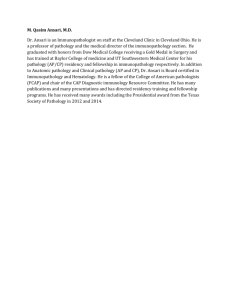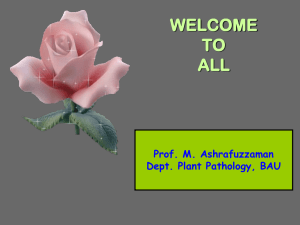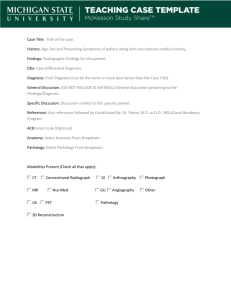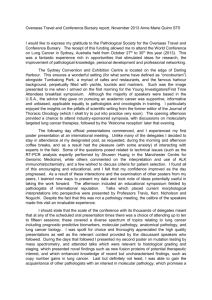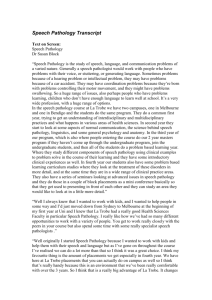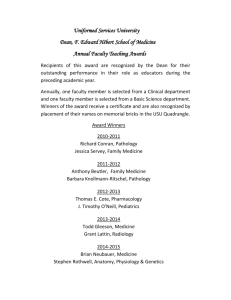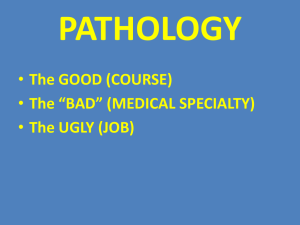Pathology Visions 2013 29 Sept - 01 Oct 2013
advertisement
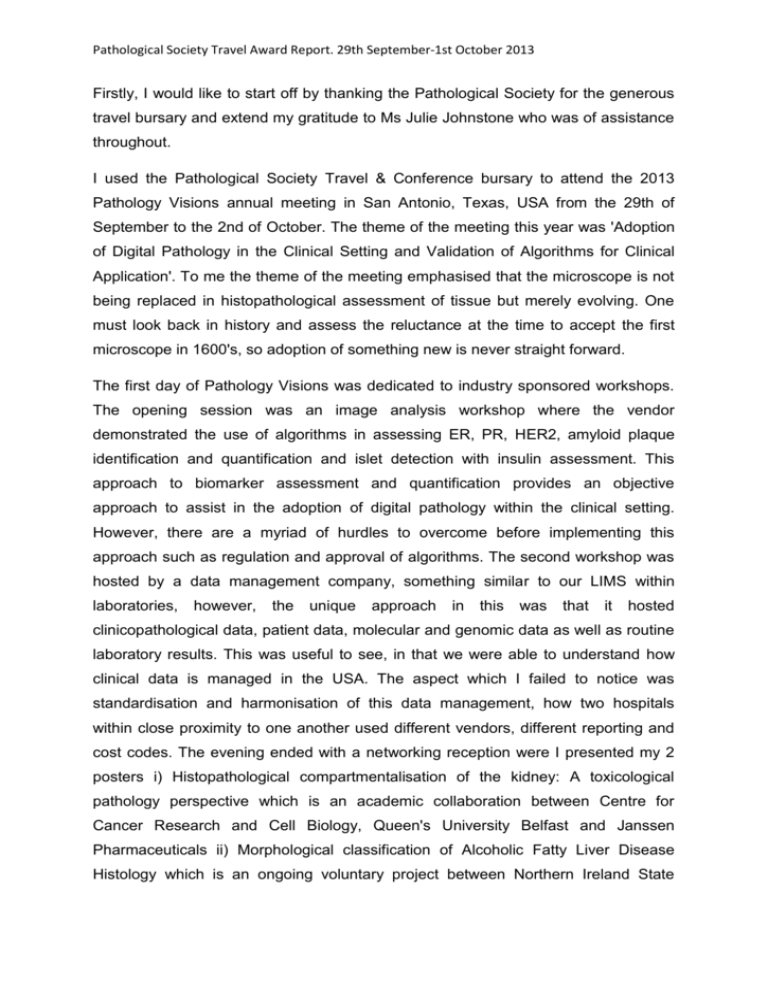
Pathological Society Travel Award Report. 29th September-1st October 2013 Firstly, I would like to start off by thanking the Pathological Society for the generous travel bursary and extend my gratitude to Ms Julie Johnstone who was of assistance throughout. I used the Pathological Society Travel & Conference bursary to attend the 2013 Pathology Visions annual meeting in San Antonio, Texas, USA from the 29th of September to the 2nd of October. The theme of the meeting this year was 'Adoption of Digital Pathology in the Clinical Setting and Validation of Algorithms for Clinical Application'. To me the theme of the meeting emphasised that the microscope is not being replaced in histopathological assessment of tissue but merely evolving. One must look back in history and assess the reluctance at the time to accept the first microscope in 1600's, so adoption of something new is never straight forward. The first day of Pathology Visions was dedicated to industry sponsored workshops. The opening session was an image analysis workshop where the vendor demonstrated the use of algorithms in assessing ER, PR, HER2, amyloid plaque identification and quantification and islet detection with insulin assessment. This approach to biomarker assessment and quantification provides an objective approach to assist in the adoption of digital pathology within the clinical setting. However, there are a myriad of hurdles to overcome before implementing this approach such as regulation and approval of algorithms. The second workshop was hosted by a data management company, something similar to our LIMS within laboratories, however, the unique approach in this was that it hosted clinicopathological data, patient data, molecular and genomic data as well as routine laboratory results. This was useful to see, in that we were able to understand how clinical data is managed in the USA. The aspect which I failed to notice was standardisation and harmonisation of this data management, how two hospitals within close proximity to one another used different vendors, different reporting and cost codes. The evening ended with a networking reception were I presented my 2 posters i) Histopathological compartmentalisation of the kidney: A toxicological pathology perspective which is an academic collaboration between Centre for Cancer Research and Cell Biology, Queen's University Belfast and Janssen Pharmaceuticals ii) Morphological classification of Alcoholic Fatty Liver Disease Histology which is an ongoing voluntary project between Northern Ireland State Pathological Society Travel Award Report. 29th September-1st October 2013 Pathologist, Professor Jack Crane CBE and myself. (Copies of posters available on request) The second day of the conference was opened by the President of the Digital Pathology Association (DPA) who echoed what was emphasised at ASCP the previous week, that pathology is integral to the deliverance personalised medicine and the manner in which the DPA has grown since its creation over 5 years ago. Reflecting on the scope of talks the themes have shifted from conception to implementation of telepathology and image analysis algorithms in particular aspects daily practice. This opening set the theme for the keynote speaker, Dr Eric Glassy, whose talk "Hitchhikers guide to Digital Pathology" lead attendees on a journey from the current problems facing digital pathology, the potential of digital pathology, the applications of digital pathology and the future of digital pathology. This talk enthralled all attendees from the use of clever videos and animations to the translation of these issues into current daily pathology practice. This lecture was by far one of the best I have attended in the field of digital pathology. The content of this lecture linked nicely into the next speakers in regards to validation of clinical diagnostic assays and the application of telepathology in Egypt. At the close of the day I was a co-chair with Dr Charles Frevert DVM, University of Washington in a round table discussion on 'image analysis in research and clinical applications'. This session attracted one of the biggest crowds of the 8 roundtables running concurrently. Issues discussed included i) hurdles facing the implementation and regulations of image analysis in routine assessment such as ER,PR and HER2 immunohistochemistry ii) the need for more collaboration between pharmaceutical industry and academia as well as industry and academia. The evening concluded with a networking dinner reception attended by all attendees and vendors. The final day of the conference concluded with workshops in which I was a one of the panel presenters on 'Image analysis in the assessment of immunohistochemical markers in breast lung and colorectal cancer'. The conference was closed by the founder of Aperio and the DPA who reiterated the challenges facing digital pathology and the exciting time ahead for the clinical implementation of this technology. Ryan A. Hutchinson rhutchinson09@qub.ac.uk
